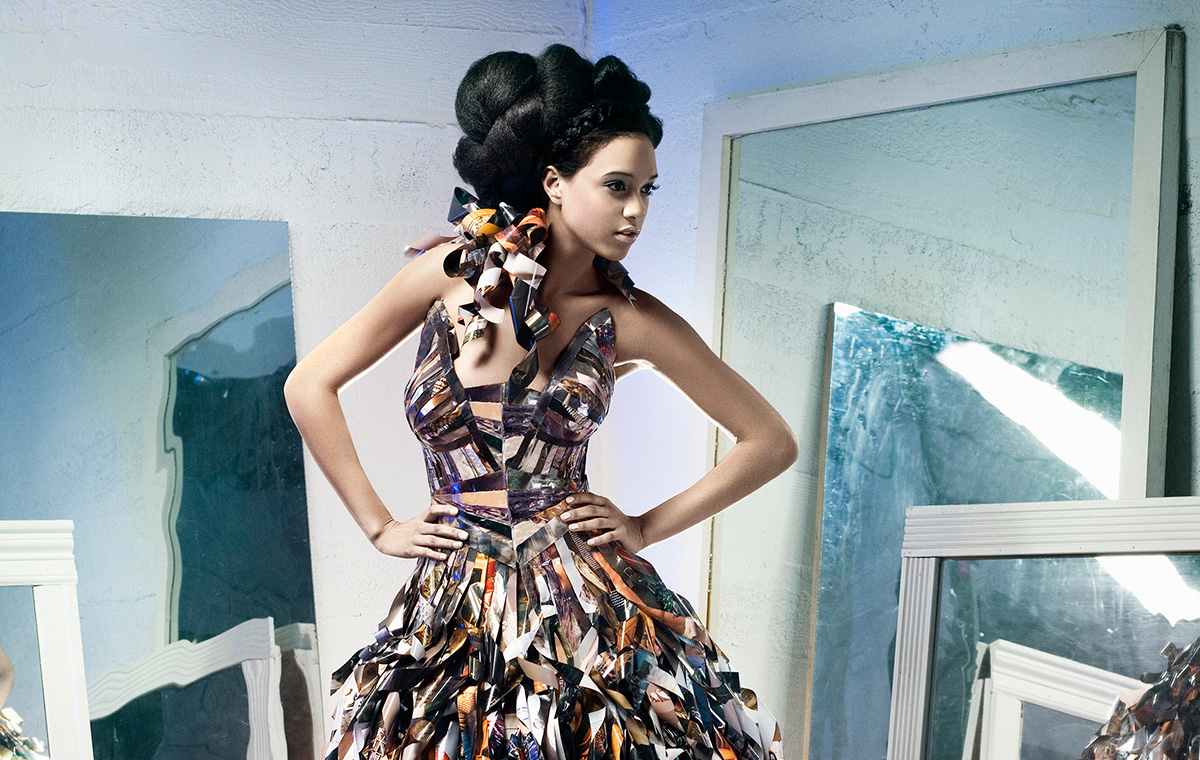"We want our paper to support the feeling that we have when we’re planning and writing content, choosing the right pictures and laying everything out as beautifully as we can. Paper is an integral part of our creative process,” explains Editor-in- Chief Taina Risto at ELLE Finland.
“ELLE has a lot of images; fashion editorials with large photos stretching over several pages. Their colours and tones have to be reproduced perfectly, to convey the desired feeling and look. Our paper has to be flexible, a real multi-purpose platform to anything we want to reproduce,” AD Saara Tuomikoski adds.
White is not white
Glossy fashion magazines often use plain white surfaces for emphasis and attracting attention. Brightness, the reflected light, is an important quality here.
“The paper must look fresh and bright. The tone of white has to be just right, not too blue. An interesting detail that demands a lot from paper in terms of brightness is our large number of bare skin close-ups,“ says Risto.
Another important quality is opacity, the amount of light transmitted through paper. No transparency is accepted in a globally known fashion icon such as ELLE. Advertisers have their say in paper quality as well.
“Visual images and advertising play an important role in any glossy magazine. Our content is image driven and we portray top brands in cosmetics, fashion and lifestyle. Our criteria is very similar to that of advertisers,” Risto says.
Fit for purpose and image
The makers of ELLE see the magazine as an accessory or an object. It can be carried around, placed on a coffee table or lent to a friend. Touch and feel of the paper are important qualities in this respect.
Fashion magazines traditionally go for coated paper, to give them that smooth and shiny finish. The result of coating is sharper printing, especially for images, and a glossier appearance of the inks used.
“Our aim is to create a wow effect for anybody who takes hold of ELLE. The magazine has to be attractive and inspiring to look and touch, offering the reader a moment above the daily grind,” Risto says. “Rougher, more porous paper qualities just don’t feel luxurious. Thickness is important, too. A weightier paper feels more vigorous and high grade in the reader’s hand. It promises value for money,” notes Tuomikoski.
A varnish finish adds an extra layer of glossiness to the cover.
“The cover plays an important role in single copy sales, an important sales channel to us. It has to be luxurious to touch and look at. A magazine cover is like a wrapping paper, a promise of its contents,” says Risto.
Trendy paper
Young visual generations are quality- conscious and rejecting the throwaway culture.
“Many of our readers keep the magazine instead of throwing it away. A print magazine offers an experience and a feeling. I believe print media is being rediscovered by young people.One example are mood boards of print images, compiled for sources of inspiration. Print and digital serve different needs and may well live side by side, in a mutually reinforcing way,” sees Risto.






